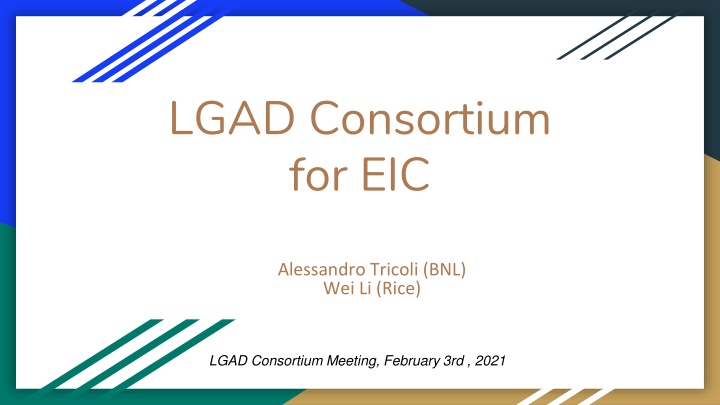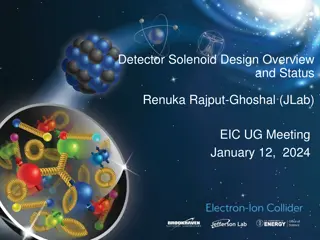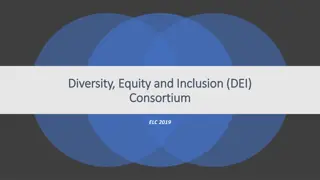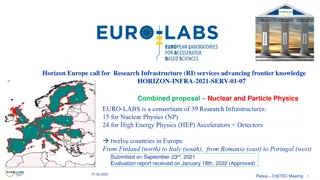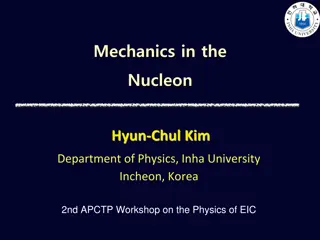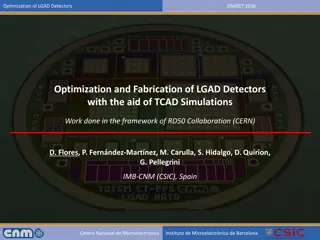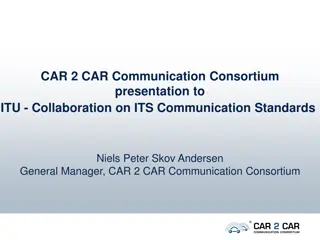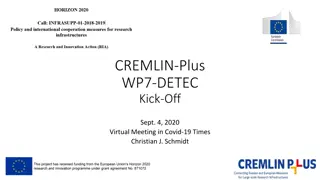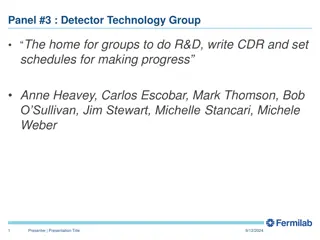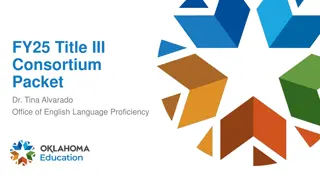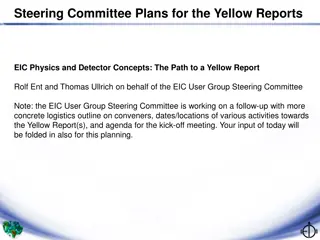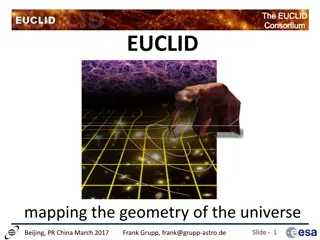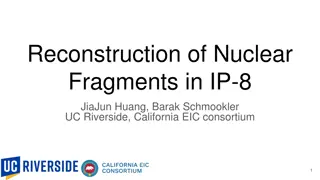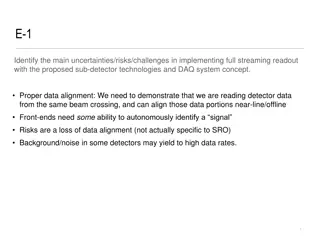LGAD Consortium for EIC: Advancing Detector Technologies
The LGAD Consortium aims to foster the development of detector technologies based on LGAD sensors for the Electron-Ion Collider (EIC) and future projects. By creating a collaborative effort, sharing expertise, and bringing together those interested in LGAD-based detectors, the consortium seeks to address common challenges and develop solutions across different detector projects. This initiative serves as a stepping stone for the broader application of LGADs in the long term.
Uploaded on Sep 28, 2024 | 4 Views
Download Presentation

Please find below an Image/Link to download the presentation.
The content on the website is provided AS IS for your information and personal use only. It may not be sold, licensed, or shared on other websites without obtaining consent from the author.If you encounter any issues during the download, it is possible that the publisher has removed the file from their server.
You are allowed to download the files provided on this website for personal or commercial use, subject to the condition that they are used lawfully. All files are the property of their respective owners.
The content on the website is provided AS IS for your information and personal use only. It may not be sold, licensed, or shared on other websites without obtaining consent from the author.
E N D
Presentation Transcript
LGAD Consortium for EIC Alessandro Tricoli (BNL) Wei Li (Rice) LGAD Consortium Meeting, February 3rd , 2021
Landscape There have been tremendous interests in ultra fast silicon detector and/or LGADs in recent years LGADs are being used at the HL-LHC for pileup mitigation, TOF-PID Several ideas and proposals have been put forward for detectors that use LGAD-based technologies at EIC and other future projects Being the next major collider, the EIC is a stepping stone for establishing a generic consortium to foster the technology for future applications (TOF, 4-D tracking, Roman Pots etc.) Comments from EIC Detector Advisory Committee on eRD24,29: It would appear natural, and beneficial overall, to see EIC LGAD-based efforts to form a consortium (like silicon tracking with MAPS) sooner rather than later. The Committee would look with approval on such convergences. LGADs are relatively new and need a collaborative effort to make them ready for use at EIC in a short time scale There is a broad spectrum of expertise in HEP, high-and medium energy NP!
The LGAD Consortium Goals Create a collaborative effort to develop EIC detector technologies based on the LGAD sensors Bring together people with common interest in LGAD-based detectors in HEP and NP communities Share expertise on the common aspects of the underlying technology that transcend any specific detector realisation NB: the consortium does not intend to replace the collaborative effort of a detector project, but supplement it, in order to study common challenges and possibly develop common solutions across different detector projects On a longer term this consortium will be a stepping stone for other, longer-term applications of LGADs
Participating Institutes and People Submission of EOI for EIC detectors based on LGADs on Oc. 30th, 2020 LINK 14 Institutes, 33 people Interests in different detector concepts TOPSiDE 4pi Hybrid LGAD/SOI Tracker Generic 4D Tracker TOF Roman Pots Preshower Interests and expertise in several different areas Sensors Electronics System Design, Engineering and Construction
EIC Timeline Overview The EIC is capable of supporting a science program that includes two detectors and two interaction regions, but Project has only funding for one full IR and one Detector $200M on detector project and an assumed $100M (US accounting) in-kind contributions A second IR and detector within the same timeline is desirable, and will depend on the EoI outcome General-purpose detector must deliver on the promised EIC science Design must be able to do the EIC science Detector must be buildable in the EIC Project timeline Detector technologies must have reasonable risk Timeline (driven by CD schedule - have one detector constructed by CD-4) March 2021: Start call for Detector Proposals September 2021: Deadline for Detector Proposals December 2021:Selection of Detector(s) Reference: https://indico.bnl.gov/event/9080/contributions/41435/attachments/30459/47756/Detector.Plans.final.pdf
This Meeting Goals of this meeting: Present detector proposals that plan on using LGADs as main sensor technology Outlines of detector concepts Status of activities Inform about interests and expertise from participating institutes EIC project interests Relevant areas of interest (sensor R&D, testing, electronics, assembly/integration, mechanical design,others) Equipment available Clarify timeline and upcoming deadlines/milestones for EIC Prepare future activities, based on specific interests by participating institutes
Next Steps Based on input and feedback from today s meeting we should plan for closer and stronger collaborations to facilitate activities across the various detector proposals Arrange discussions focus on specific common aspects Sensor R&D (ultimate timing performance, space+timing sensors - TI/AC-LGADs, testing) Electronics (test-boards, ASICs, data transmission, clock distribution, offline electronics) System Design and Mechanical Engineering (e.g. mechanical designs, cooling etc.) Intention is not to proliferate meetings, but to create fora for targeted technical discussions bringing together experts and discuss common challenges and possible solutions
Timeline Reference: https://indico.bnl.gov/even t/9080/contributions/4143 5/attachments/30459/477 56/Detector.Plans.final.pdf
